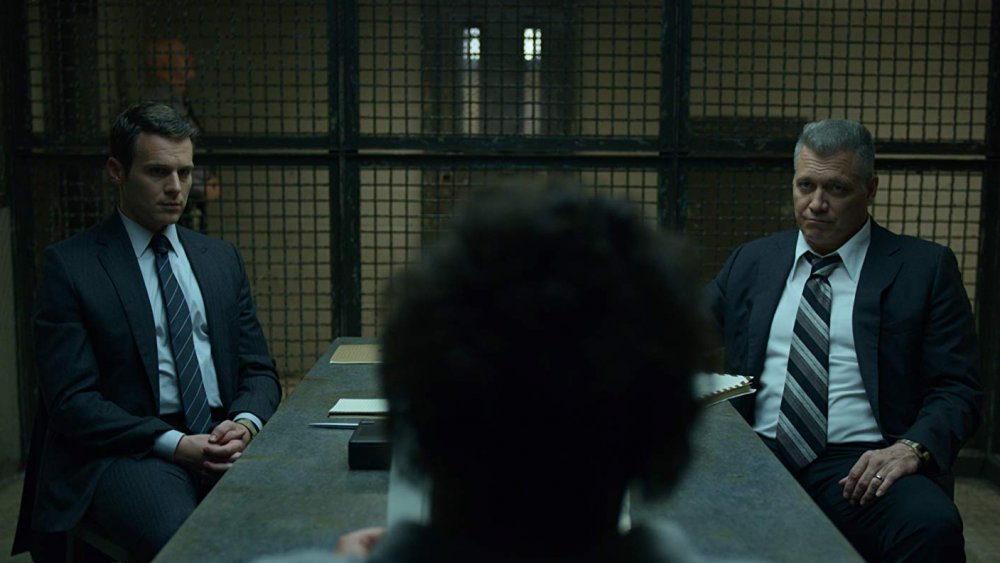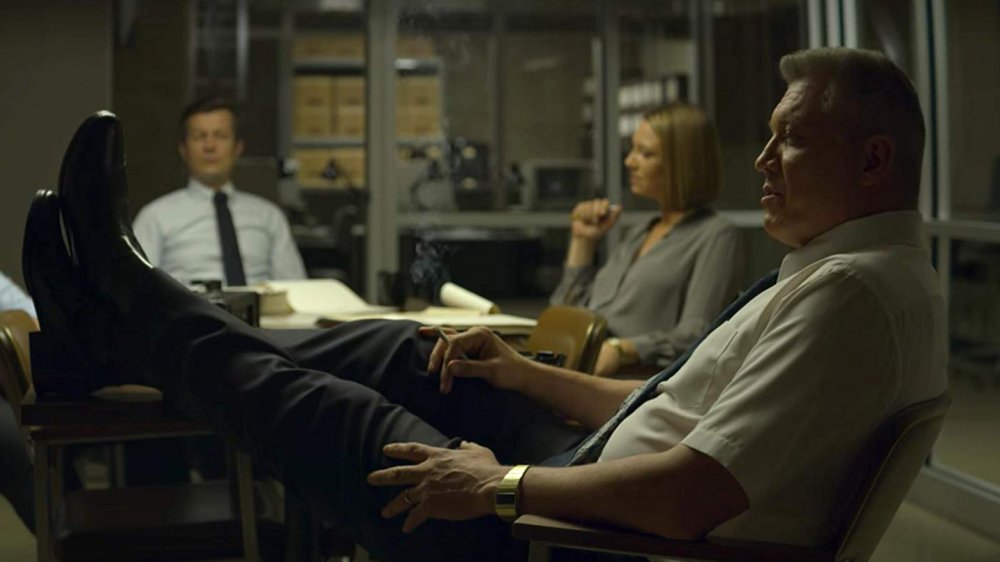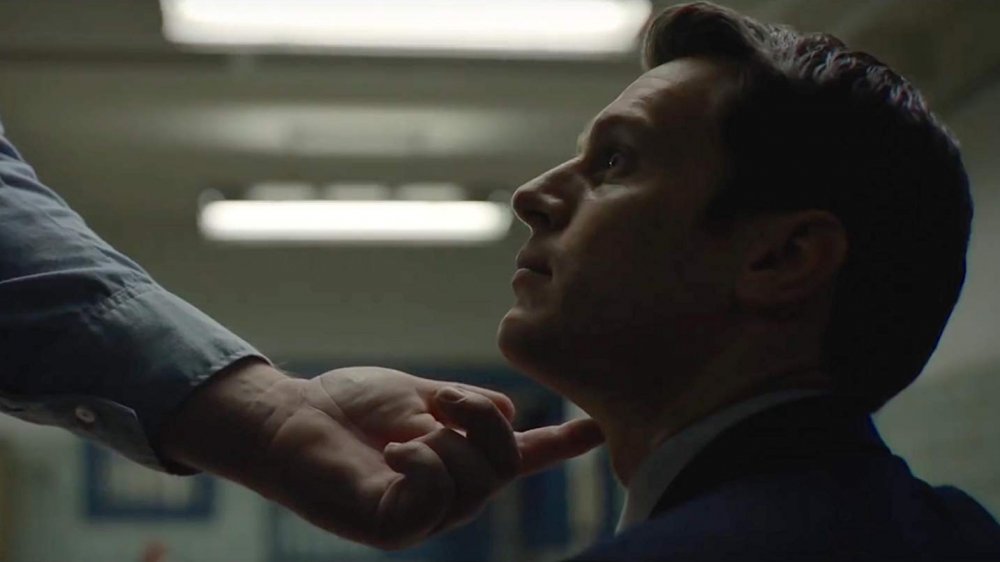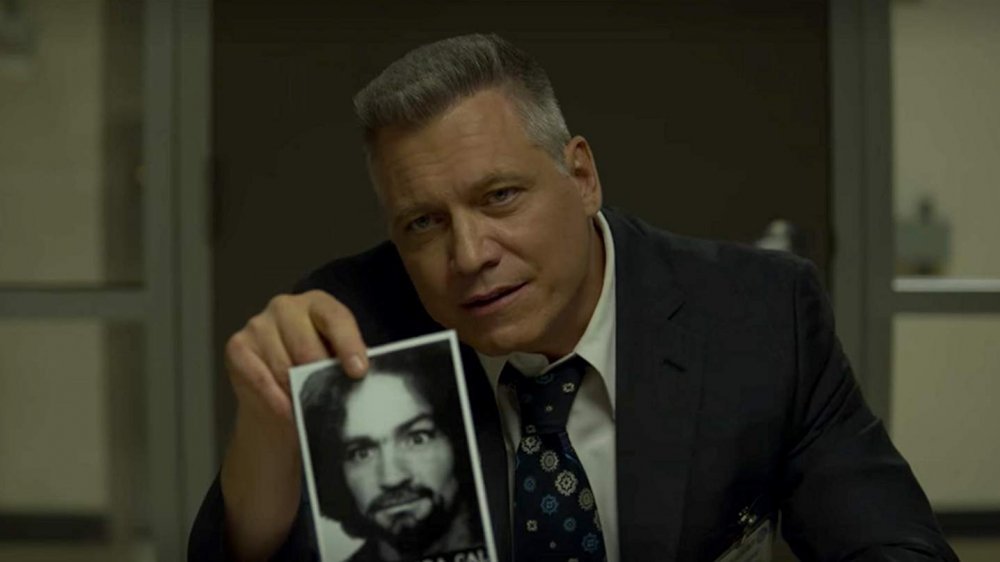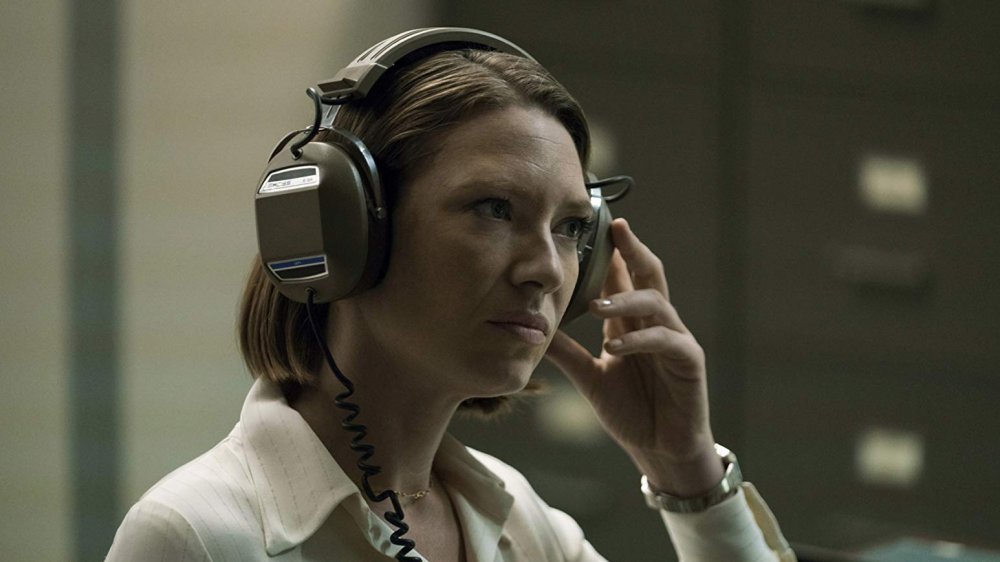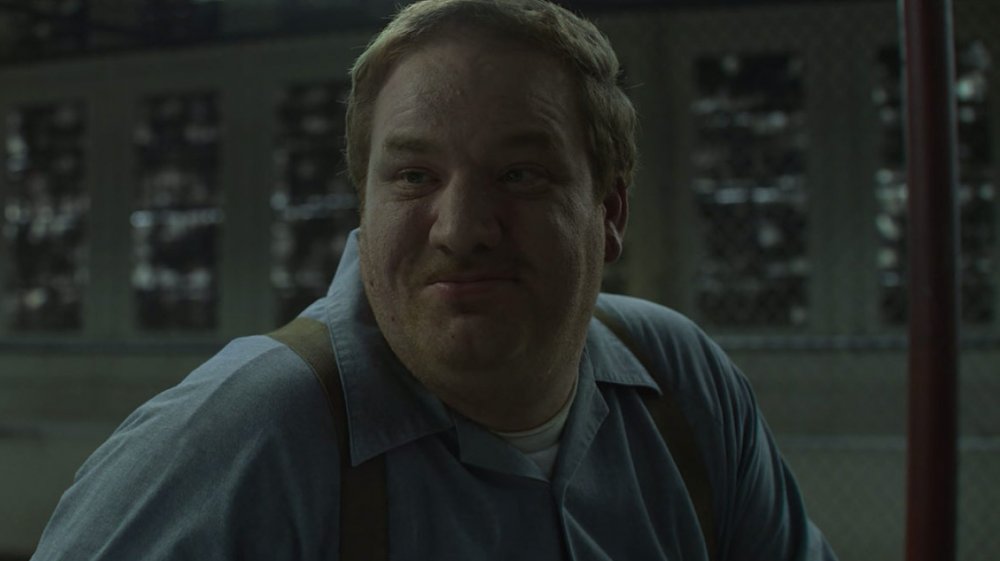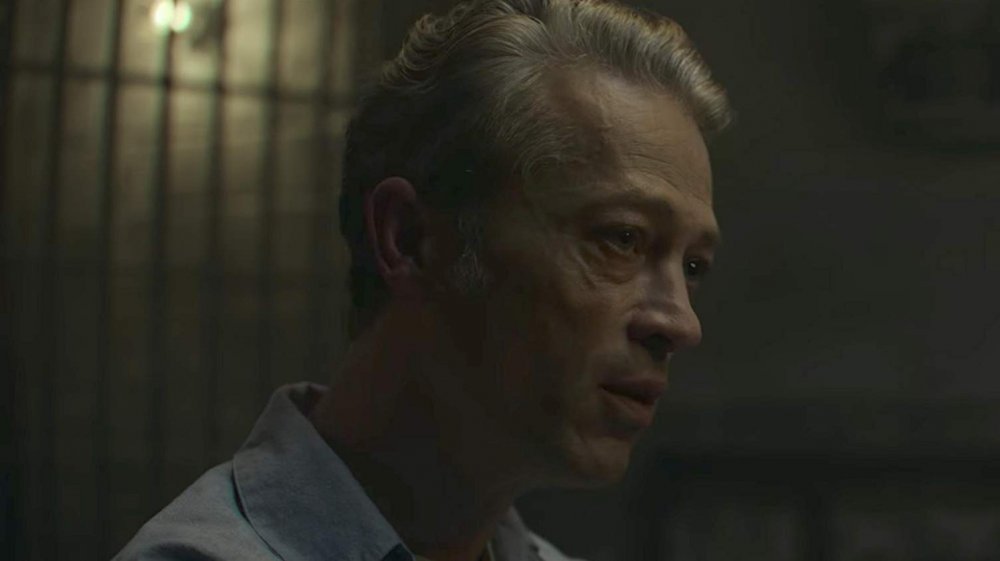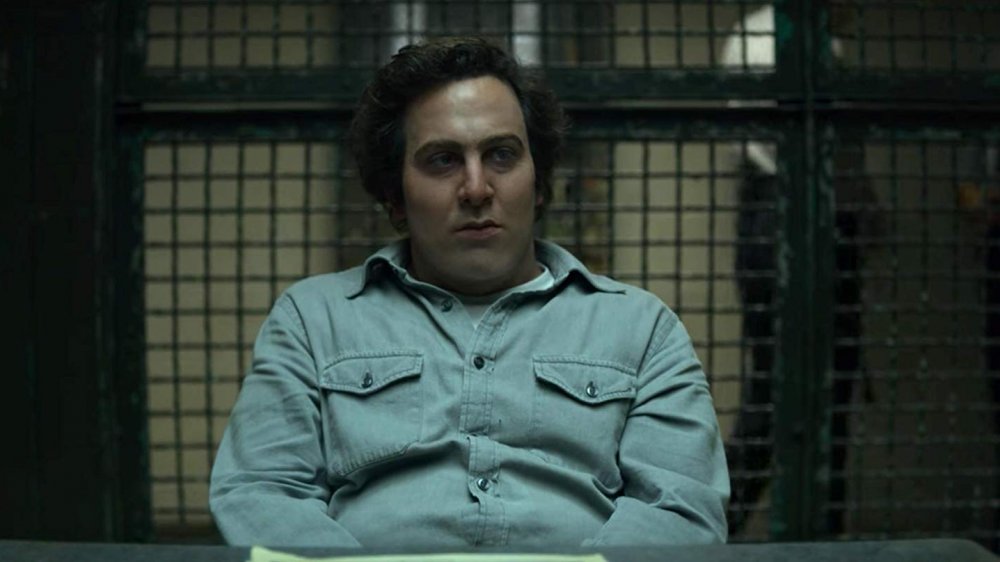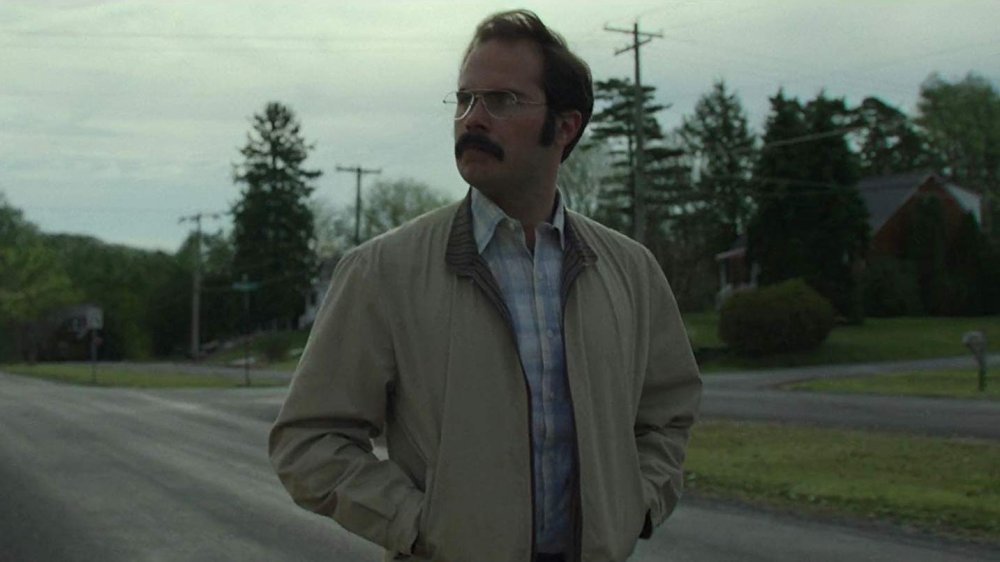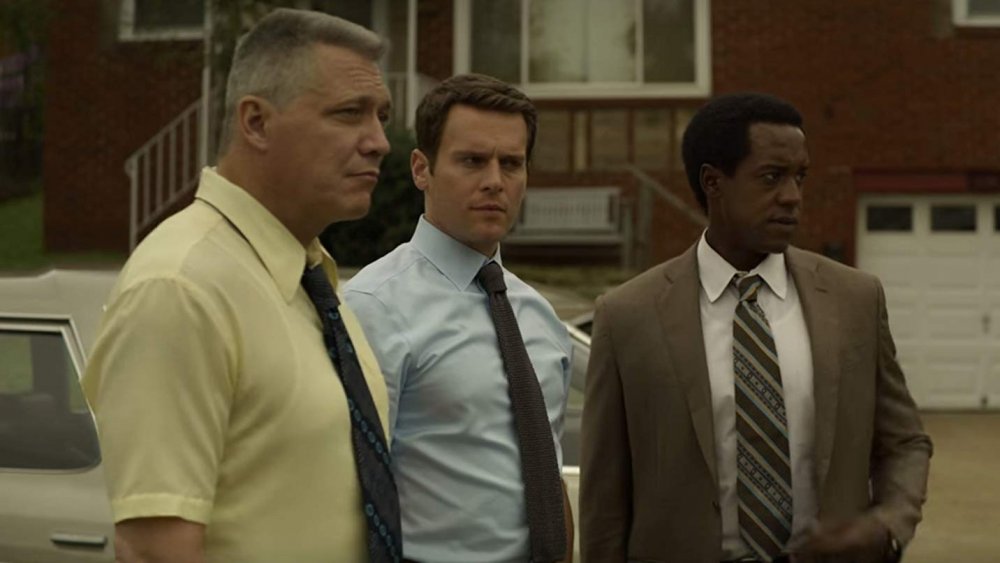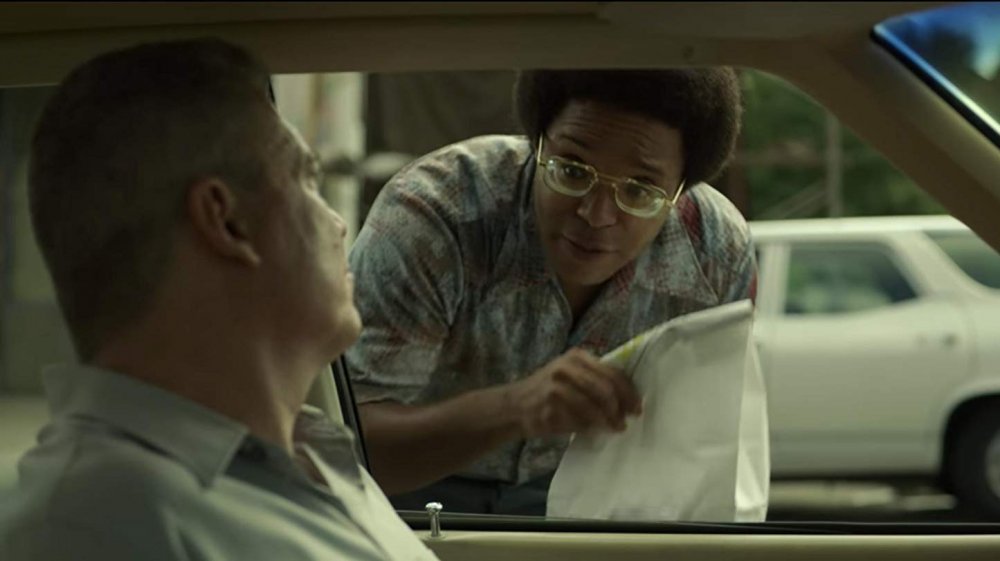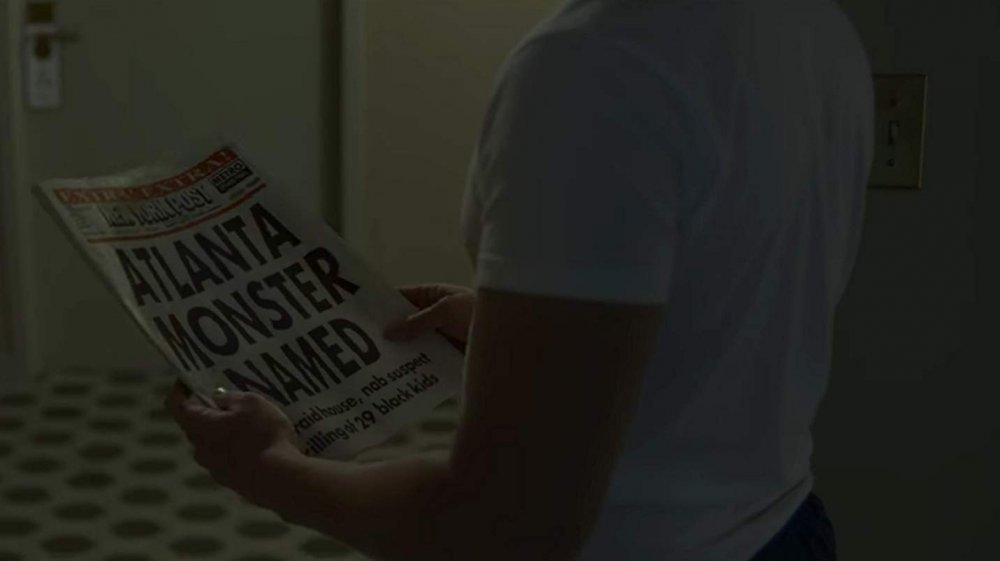How Real Is Mindhunter?
Mindhunter is a Netflix thriller series from producer/director David Fincher, about a small unit of FBI agents who revolutionized the way law enforcement hunts for serial killers by using psychological profiles drawn up by interviewing dozens of incarcerated killers and figuring out how their minds work. The show is based on the true crime book Mindhunter: Inside the FBI's Elite Serial Crime Unit, co-written by FBI agent John E. Douglas, the inspiration for the show's main character. But how true to life is it? Did these crimes really happen, or were they exaggerated for television? Which of the killers interviewed were real people? Did one of the investigators really have a child that is definitely going to become a serial killer?
The general rule of thumb is the agents and investigators are fictionalized versions of real people, with the personal details of their lives largely fabricated for the show, while the killers are depicted with shocking accuracy. For more specifics on the amount of homework the creators of the show have done, read on and see just how real Mindhunter is.
Mindhunter's Behavioral Science Unit
The plot of Mindhunter centers on the early days of the Behavioral Science Unit, a unit within the FBI that worked on developing databases to provide training and insight on how criminals think and act, allowing law enforcement agencies to create profiles and predict future criminal behavior. In the show, the unit is more or less made up of Agents Ford and Tench, with Dr. Carr and one other agent rounding out the division. While the show acknowledges the Behavioral Science Unit (today known as the Behavioral Analysis Unit) began before Ford and Tench began their interviews, by the time they begin, they are more or less all there is.
As the FBI's own website explains, the BSU was formed in 1972 when agents Howard Teten and Patrick Mullany–neither of whom are represented in the show–began using elements of criminal psychology to teach law enforcement groups how to analyze criminal behavior in response to the growing wave of what would come to be known as serial murders and sexual assaults in the 1970s. Their small unit, originally made up of just 10 agents, would by 1976 include agents John E. Douglas and Robert Ressler–the inspirations for Ford and Tench, respectively–who would begin compiling their central database of serial offenders, which is of course where the show comes in. As is often the case in adaptations, things are streamlined for the sake of simplicity.
Mindhunter's Holden Ford vs John E. Douglas
Arguably the central character of the ensemble cast of Mindhunter is Holden Ford, portrayed by Jonathan Groff, the young hostage negotiator whose radical ideas about criminal psychology more or less kick off the whole pursuit of interviews of serial offenders. He is largely based on real-life FBI agent John E. Douglas, whose book Mindhunter: Inside the FBI's Elite Serial Crime Unit, co-written with Mark Olshaker, was the inspiration for the show. He was one of the very first criminal profilers, and he has written several books on the topic.
A profile on Douglas in the Telegraph gives an idea of how similar Douglas and Ford are, at least in the broad strokes. Like Ford, Douglas is a soft-spoken Brooklyn native who worked as a hostage negotiator and instructor at Quantico. Like Ford, Douglas realized serial killers were not simply monsters to lock in a dungeon, but potential wellsprings of insight and information that could lead to the capture of other serial offenders. Just as Ford uses his relationships with incarcerated killers to glean understanding about active killers, Douglas consulted with Ted Bundy for information that led to the capture of the Green River Killer (and thereby inspiring Clarice Starling's relationship with Hannibal Lecter in The Silence of the Lambs). Many small details on Mindhunter come from Douglas's recollections, including Charles Manson sitting on the back of a chair to seem taller than his interviewers.
Mindhunter's Bill Tench vs Robert Ressler
Holden Ford's partner and the second primary character on Mindhunter is the straight-laced, more traditionally masculine figure of Bill Tench, played by Holt McCallany, whose more conservative demeanor presents a stark contrast to the younger, less predictable Ford. Tench is largely based on FBI agent Robert Ressler, the man who is generally credited with coining the term "serial killer" in conjunction with John Douglas, much as Tench and Ford are seen developing the term on the show.
Ressler served in the U.S. Army, where he worked in law enforcement as the Commander of a Criminal Investigation Division. He came to work at the FBI after finishing his military career with a rank of major and a Master's degree in police administration. As NPR explains, shortly after joining the Bureau in 1970, Ressler was able to convince them profiling could be a legitimate and effective tool for hunting killers, and by the middle of the decade, he and Douglas were interviewing incarcerated murderers and building a centralized database. He developed relationships with such notorious killers as Ted Bundy and Jeffrey Dahmer, and John Wayne Gacy even gave him a personalized painting as a gift. The entire running plot about Tench having an adopted son who is definitely going to become a serial killer is completely fictional, however.
Mindhunter's Wendy Carr vs Ann Wolbert Burgess
Rounding out the trio of protagonists on Mindhunter is Dr. Wendy Carr, a psychology professor from Boston who tries to rein in Ford's wilder and more unconventional notions with something at least resembling professionalism and intellectual rigor. She is portrayed by Anna Torv, who previously worked with the fictional FBI solving space crimes on the show Fringe. Of the three main characters, Dr. Carr is the farthest from her real-life inspiration, but she is nevertheless loosely based on a psychiatric forensic nurse researcher named Ann Wolbert Burgess.
The real Ann Burgess told the Pittsburgh Post-Gazette Mindhunter shows "probably 80 percent of the cases pretty solid." She said many of the scenes of the main characters are true to life, even if fictionalized, as she said her role–like Dr. Carr's–was to bring methodology, research, and structure to what Douglas and Ressler were doing. Like Carr, Burgess is from Boston, but rather than a psychologist, she is a professor of psychiatric health nursing. Burgess said she suspected this change was to make the character's career a little more understandable, as most people don't properly understand nursing. Two major changes made for the show, however, are that unlike Dr. Carr, Burgess never moved to Quantico, and Burgess is not a lesbian, a character change that was apparently a source of some humor for Burgess's son.
The real Co-Ed Killer vs Mindhunter's
While Ford, Tench, and Carr are the central characters of Mindhunter, the real star of season one is the first subject of Ford and Tench's interviews, the Co-Ed Killer Edmund Kemper, played to the nines by Cameron Britton, who wore shoe lifts to make his own 6 foot 5 inch frame a little closer to Kemper's 6 foot 9 stature. Kemper's character is a fascinating one, as his intelligent, eloquent, and soft-spoken nature belies the hideous truth of the despicably violent things he has done. His candor and forthrightness make him a subject of interest not only for Agent Ford, who arguably gets too close to Kemper, but for the viewer.
All of which had many viewers wondering how close Mindhunter's depiction of Kemper is to the real-life Co-Ed Killer? Well, as Cosmopolitan lays out, the answer is "really super freaky close." All of the details of his life Kemper gives during his interviews with Ford and Tench are not only exactly true to what happened–murdering his grandparents as a teen just to see what it felt like, getting released from a mental hospital because he was so amiable and intelligent, killing female students and then doing gross stuff to their bodies, that thing with his mom and her head, and so on–they're often in his exact words from interviews he gave in real life.
The real Shoe Fetish Slayer vs Mindhunter's
In contrast to Ed Kemper, whose blasé attitude toward his own crimes and his almost pathological desire to help law enforcement lead him to readily confess every detail of his horrific deeds to Ford and Tench, the two agents have a much harder time with Jerry Brudos, known alternately as the "Lust Killer" or the "Shoe Fetish Slayer." It's not until Ford and Tench give Brudos a pair of shoes for him to, uh, enjoy that he opens up about his crimes, and even then he only talks about them in oblique terms, as if he were talking about someone else.
As Biography explains, Brudos's whole history as recounted on Mindhunter is accurate, from his fascination with women's footwear beginning with finding a pair of high heels in a junkyard at age five to his outwardly normal domestic life with a wife and children hiding his darker fetishes and grisly desires. As recounted in the show, Brudos's first murder was of a young encyclopedia saleswoman that he lured in by pretending to be interested in buying a set of books. As his string of murders continued, Brudos would collect trophies from his victims–clothes, shoes, and body parts–and he would photograph their dead bodies and dress in their clothes. Another interesting detail from the show is Brudos fixes Ford's broken tape recorder: Brudos worked as an electronics technician before his spree began.
The real Richard Speck vs Mindhunter's
One of the more memorable killers in season one of Mindhunter is Richard Speck, played with all appropriate griminess by Jack Erdie. He's notable for being a disgusting creep who brags about the sexual nature of his crimes and throws a bird into a fan, but also for the way Ford initially gushes like a fanboy at the prospect of meeting him, and of course for the consequences of their interview, which could potentially spell the end of the Behavioral Science Unit due to Ford's conduct in goading Speck into talking.
As you can read on Biography, the real Speck was just as gross and repellent as the TV version, notorious for his 1966 mass murder of eight nursing students in Chicago, leaving one surviving victim who was able to identify Speck by the "Born to Raise Hell" tattoo Ford makes special mention of in the episode. The details of his crime, including how he forced his way into the apartment with a gun before brutalizing the women and somewhat ironically forgetting about the one who had answered the door, are all accurately recounted on the show. The nature of Speck's crimes was different from many other killers and helped draw the distinction between serial killers and spree killers.
The real Son of Sam vs Mindhunter's
One of the most notorious killers of all time doesn't make an onscreen appearance on Mindhunter until season two, partly because his infamous reign of terror ended just prior to the events of season one. That killer is David Berkowitz, perhaps better known by the nickname he gave himself, the Son of Sam. Berkowitz is played on the show by Oliver Cooper and some facial prosthetics, and his interview with Ford and Tench might be surprising to some viewers.
As Cosmopolitan recounts, Berkowitz caused panic in New York City by shooting six people in 1976 and 1977 and sending cryptic letters to the police in which he claimed to be acting under the orders of his neighbor's Labrador retriever, which was possessed by a demon. This story is well known because of the media uproar that surrounded Berkowitz's crimes and arrest. But on Mindhunter, Berkowitz admits the demon angle was all just a story to get attention. As Vulture explains, the real-life Berkowitz did admit to exaggerating many of his claims, and John Douglas claims he was never fooled by the whole "Son of Sam" thing. Additionally, Douglas and Ressler did actually consult Berkowitz over the letters sent by the killer who called himself BTK, just as Ford and Tench do on the show, as Berkowitz had also sent letters during his spree.
The real BTK killer vs Mindhunter's
Throughout season one, Mindhunter would often cut to seemingly unrelated scenes featuring an ADT salesman who eventually is shown to exhibit some disturbing behavior like getting caught by his wife doing some weird solo sex stuff and then breaking into a person's house to murder them before getting bored and leaving, which then escalates into, you know, actual terrible murders. While his name is never said and he doesn't interact with any of the main characters, not even coming into their awareness until season two, serial murder fans (a very weird thing to say, but a surprisingly large demographic these days) doubtlessly recognize this figure–portrayed by actor Sonny Valicenti–as the infamous Dennis Rader, aka the BTK killer.
As Biography explains, the real Rader was a seemingly average family man, working for a home security company in Wichita, Kansas, and also being an active church member and Boy Scout leader. This was, of course, a cover for his disturbing secret life, in which he performed sexually-tinged murders involving bondage and cross-dressing. It was because of his methods of killing he gave himself the name BTK–"bind them, torture them, kill them"–in one of his many notes to police. But even though the BSU started investigating Rader in season two, the real BTK wasn't captured until 2005, so presumably it's going to be a minute before the TV version gets caught.
The hunt for Wayne Williams
Although season two of Mindhunter sees its main characters interviewing some of the most notorious criminals of all time–including Charles Manson and Son of Sam–the spine of the season is made up of Agents Ford and Jim Barney working with a task force in Atlanta to uncover the so-called "Atlanta Child Killer," who is eventually alleged to be Wayne Williams, played with uncanny accuracy by Christopher Livingston. The hunt for this killer and the investigation of Williams make up the bulk of the action of season two.
If anything, Mindhunter actually undersells the scope of Williams's crimes. As Good Housekeeping explains, between 1979 and 1981 dozens of black boys and young men, as well as two black girls, were kidnapped and killed, with their bodies dumped in various places around Atlanta. This reign of terror threw Atlanta into a frenzy, and the families of the victims demanded justice and the apprehension of the killer (or killers, as many believed) responsible. Despite the belief within the community the killer was likely a member of the Ku Klux Klan, John Douglas (just like Holden Ford does on the show) argued the killer was probably black, as he would be less likely to be noticed in black neighborhoods and because serial killers rarely cross racial lines. A curfew was imposed in the city for children under 17, after which young adults began disappearing rather than children.
The capture of Wayne Williams
The capture of Wayne Williams happened in real life pretty much exactly as it did on Mindhunter. After a story in the Atlanta newspapers revealed police had found fibers and dog hair on some of the bodies the child killer had dumped, the killer changed his methods and started dumping the bodies of his victims in the Chattahoochee River. As Biography recounts, investigators could now narrow the focus of their search, staking out all 14 bridges over the Chattahoochee in the Atlanta area.
This strategy paid off in real life just as it does on the show. After four weeks of waiting, a group of officers on stakeout heard a loud splash in the early morning of April 22, 1981. There was only one car on the bridge at this time, a station wagon that attempted to flee the scene. Police chased the car and pulled it over. Its driver was Wayne Williams, a 22-year-old freelance photographer and super sketchy "talent scout." The police couldn't determine what had caused the splash at the time, so Williams was let go, but two days later, they found the body of a young man downstream from the site. Williams was questioned, and due to his home containing fibers and dog hairs matching those found on the bodies of some of the victims, he was arrested for the murders of two young men, but not any of the children.
The controversy over Wayne Williams
The Wayne Williams case was the first major public effort by John Douglas to prove the efficacy of the methods being developed by the BSU. In addition to his profile of a young black man proving correct, he also successfully advised prosecutors to keep Williams on the stand as long as possible and to goad him about his failures, which provoked a hostile reaction on the stand that ultimately led to his conviction. However, Douglas was officially censured by the FBI for publicly stating Williams was the likely perpetrator of a large number of the killings, not unlike Agent Ford finding himself in hot water for similar statements.
Just as depicted on Mindhunter, Williams was never convicted or even charged with the murders of any children, instead being convicted for the murders of two adults. Unlike most of the killers interviewed by Douglas and Ressler, Williams never confessed to any of his crimes and in fact denies responsibility. And as CNN reports, the mayor of Atlanta reopened the child killer cases in 2019 in order to use modern technology to finally determine a definite killer and provide closure for the families of the victims. According to the Mindhunter book, even Douglas does not believe forensic evidence points to Williams being the killer of more than half of the children lost in Atlanta between 1979 and 1981, so the results of this new investigation will be interesting, to say the least.
